Home>Interior Design>How To Commission Decorative Plasterwork
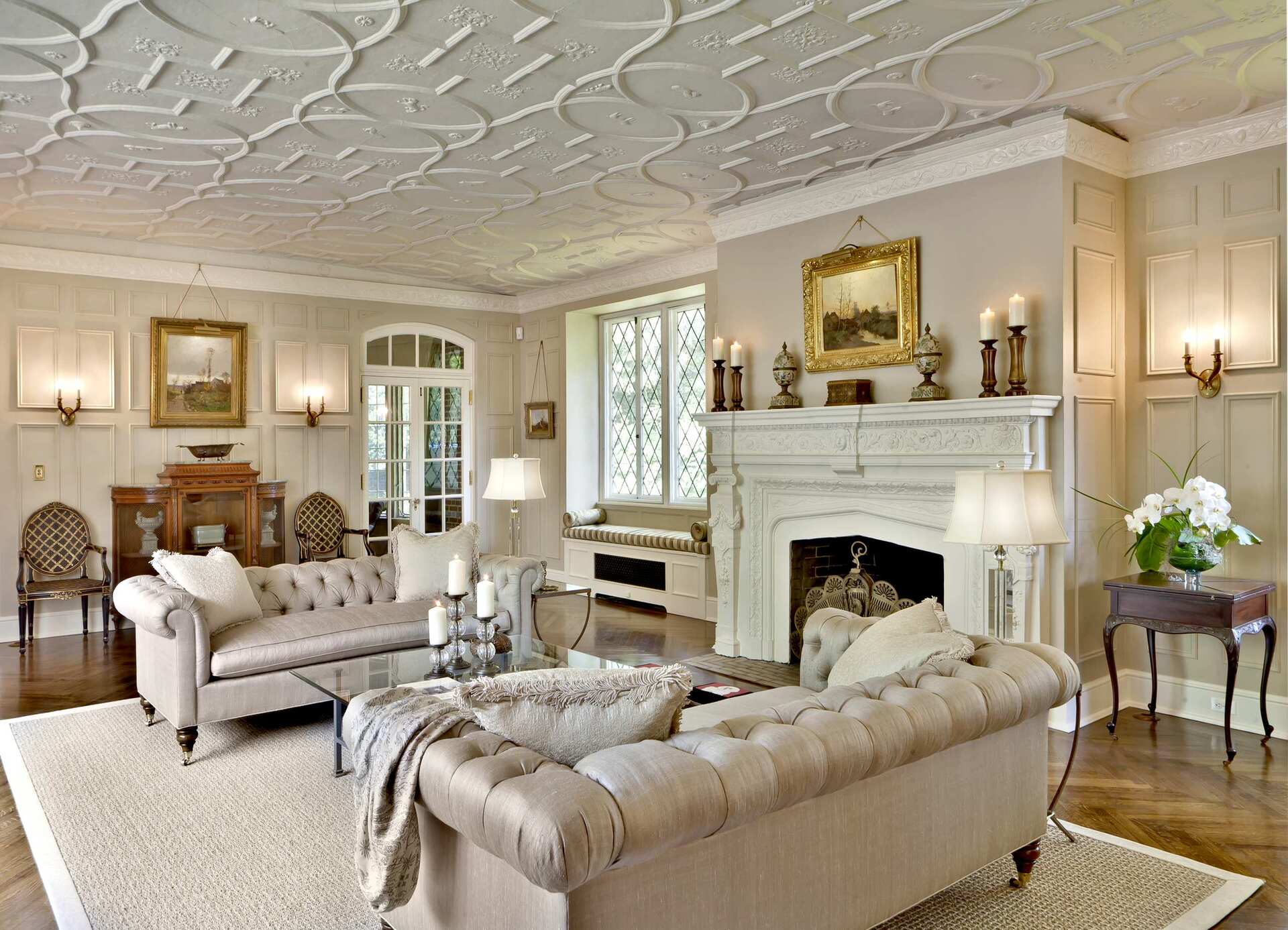

Interior Design
How To Commission Decorative Plasterwork
Modified: January 5, 2024
Learn how to commission exquisite decorative plasterwork for your interior design project. Discover the best techniques and find skilled artisans to bring your vision to life.
(Many of the links in this article redirect to a specific reviewed product. Your purchase of these products through affiliate links helps to generate commission for Storables.com, at no extra cost. Learn more)
Introduction
Welcome to the world of decorative plasterwork, where skilled artisans create stunning masterpieces that add beauty, elegance, and character to any interior space. Whether you’re renovating your home, designing a new commercial space, or simply looking to enhance the aesthetics of your surroundings, commissioning decorative plasterwork can transform ordinary walls, ceilings, and architectural details into works of art.
Decorative plasterwork has a rich history dating back centuries and has been used to adorn the palaces, churches, and grand residences of royalty and the wealthy. Today, it continues to be a popular choice for those who appreciate the intricate craftsmanship and timeless beauty it offers.
In this guide, we will take you through the process of commissioning decorative plasterwork, from finding a skilled artisan to caring for and maintaining your plasterwork creations. By the end, you’ll have the knowledge and confidence to embark on your own plasterwork project, creating a space that exudes luxury, charm, and sophistication.
Before we dive into the details, it’s important to note that commissioning decorative plasterwork is a specialized skill that requires the expertise of a trained artisan. Plasterwork is a versatile material that can be sculpted, molded, and cast into various designs and patterns, allowing for endless possibilities. Whether you’re looking for intricate ceiling roses, ornate cornices, or decorative wall panels, plasterwork can be customized to suit your unique style and preferences.
So, let’s begin our journey into the world of decorative plasterwork and explore the steps involved in bringing your vision to life.
Key Takeaways:
- Commissioning decorative plasterwork is a meticulous process that requires finding a skilled artisan, assessing design and style, budgeting, and selecting the right materials to create a timeless and visually captivating space.
- Collaboration with the artisan, careful preparation of the space, and ongoing maintenance are essential for achieving flawless decorative plasterwork that exudes elegance and sophistication for years to come.
Finding a Skilled Plasterwork Artisan
When it comes to commissioning decorative plasterwork, finding a skilled artisan with the expertise and experience is crucial to achieving the desired results. Here are some steps to help you find the right plasterwork artisan for your project:
- Do your research: Start by researching and gathering information about different plasterwork artisans in your area. Look for those who specialize in decorative plasterwork and have a proven track record of delivering high-quality craftsmanship.
- Ask for recommendations: Reach out to friends, family, or colleagues who have commissioned decorative plasterwork in the past. They can provide valuable insights and recommend artisans they had a positive experience with.
- Visit showrooms or exhibitions: Attend local interior design shows or visit showrooms that display plasterwork samples. This will give you a chance to see the quality of their work firsthand and speak directly with artisans or representatives.
- Check online directories and websites: Utilize online directories and websites that showcase listings and portfolios of plasterwork artisans. Look for certifications or memberships to professional organizations as an indication of their commitment to quality and expertise.
- Read reviews and testimonials: Look for reviews and testimonials from previous clients to get an idea of the reputation and satisfaction levels of the artisans you are considering. Consider both positive and negative feedback to make an informed decision.
- Request a portfolio: Ask potential artisans for their portfolio of previous work. This will give you an idea of their style, versatility, and attention to detail. Look for examples that align with your vision and desired aesthetic.
- Ask for references: Request references from past clients and take the time to contact them for feedback on their experience working with the artisan. This will help you gauge their professionalism, communication, and ability to meet deadlines.
- Obtain quotes: Once you have shortlisted a few artisans, request detailed quotes that outline the scope of work, materials used, and estimated timeline. Compare the quotes to ensure you are getting value for your investment.
Remember, finding a skilled plasterwork artisan is essential for a successful project. Take the time to research, ask questions, and gather all the necessary information before making your final decision. Investing in the right artisan will ensure that your decorative plasterwork is executed to perfection and stands the test of time.
Assessing Design and Style
When commissioning decorative plasterwork, it’s crucial to assess the design and style that best suits your space and personal preferences. Whether you’re aiming for a classic, traditional look or a more contemporary, modern design, here are some important factors to consider:
- Architectural Style: Take into account the architectural style of your space. Whether you have a Victorian-era home or a sleek, minimalistic office, the plasterwork should harmonize with the existing design elements. Consider whether you want to maintain the historical authenticity of the space or add a touch of modern flair.
- Inspiration and References: Look for inspiration in design magazines, online platforms, and architectural history books. Explore different styles, patterns, and motifs to gather ideas for your project. Create a mood board or a collection of reference images to help guide the artisan in understanding your vision.
- Scale and Proportion: Consider the scale and proportion of the plasterwork in relation to the size of the space. Large, elaborate designs may overwhelm a small room, while delicate details may get lost in a large, open area. Striking a balance is essential to ensure the plasterwork enhances the overall aesthetics without overpowering the space.
- Functionality: Determine the purpose and functionality of the plasterwork. Are you looking for decorative elements on the ceiling, wall panels, or ornate features like cornices and corbels? Consider how these elements will enhance the functionality of the room and contribute to the overall ambiance.
- Color Palette: Think about the color palette that complements your design vision. Plasterwork can be left in its natural white hue or painted in a variety of shades to match the overall color scheme of the room. Consider how the color of the plasterwork will interact with other elements like furniture, flooring, and wall coverings.
- Attention to Detail: Pay attention to the level of detail you desire in the plasterwork. Do you prefer intricate patterns and textures, or a more subtle and minimalistic approach? Discuss this with the artisan to ensure they understand your expectations and can deliver the desired level of detail.
- Longevity and Timelessness: Consider whether you want your plasterwork to withstand trends and stand the test of time. Opting for classic, timeless designs ensures that your plasterwork will remain relevant and visually appealing for years to come.
- Budget Considerations: Keep in mind your budget and the cost implications of different design choices. Elaborate and intricate designs may require more effort and time, impacting the overall cost. Discuss your budget constraints with the artisan to find a solution that balances your design aspirations with financial feasibility.
By assessing the design and style considerations, you can ensure that your decorative plasterwork aligns with your vision and creates a harmonious and visually stunning space. Collaborate closely with the artisan to bring your design ideas to life and create a truly personalized and captivating environment.
Budgeting and Cost Considerations
When it comes to commissioning decorative plasterwork, it’s essential to establish a budget and consider the associated costs to ensure a smooth and financially feasible project. Here are some key factors to consider when budgeting for your plasterwork:
- Scope of Work: Define the scope of work for your plasterwork project. Determine whether you need plasterwork on ceilings, walls, or both. Consider the complexity of the design and the level of detail involved. The more intricate and extensive the scope, the higher the cost may be.
- Materials Used: The choice of materials will impact the cost of your plasterwork project. Traditional plasterwork is typically made from a mixture of gypsum, sand, and water, while more modern options may include synthetic materials. Discuss the different material options with the artisan to understand their cost implications.
- Size and Scale: The size and scale of the plasterwork will influence the overall cost. Larger, more elaborate designs require more time and materials, leading to higher costs. Consider the proportion of the space and the impact you want the plasterwork to have when determining the size and scale of your project.
- Artisan’s Expertise: The skill and expertise of the plasterwork artisan will play a role in the cost. Highly experienced artisans who have honed their craft over years of practice may charge higher rates. However, their expertise ensures a higher quality of work and attention to detail.
- Design Complexity: The complexity of the design and the level of detail involved will impact the cost. Elaborate patterns, intricate textures, and custom molds require more time and effort, leading to higher costs. Discuss your design ideas with the artisan to understand how it will affect the overall budget.
- Additional Services: Consider any additional services that may be required for your plasterwork project. This could include scaffolding, specialized equipment, or external contractors for specific tasks. Factoring in these additional services will help avoid budget surprises as the project progresses.
- Timeline: The timeline for the project can affect the cost. If you have a tight deadline, it may require the artisan to allocate more resources and work longer hours, leading to higher costs. Discuss the desired timeline with the artisan to determine the feasibility and associated costs.
- Location: The location of your project can influence the cost due to varying labor rates, material availability, and even transportation costs. Consider any regional factors that may impact the overall budget.
It’s important to communicate your budget constraints with the plasterwork artisan from the outset. They can provide guidance on cost-saving measures, alternative materials, or design options that align with your budget. This collaboration ensures transparency and allows for a project that fits within your financial parameters.
Remember, while budgeting is important, it’s crucial not to compromise on quality. Investing in skilled artisans and high-quality materials will ensure a result that not only meets your budget but also stands the test of time and delivers the desired aesthetic impact.
Material Selection
When commissioning decorative plasterwork, selecting the right materials is essential to ensure the longevity, beauty, and overall quality of the finished product. Here are some key factors to consider when choosing materials for your plasterwork project:
- Gypsum Plaster: Gypsum plaster, also known as plaster of Paris, is a common material used in decorative plasterwork. It is a versatile material known for its excellent workability, durability, and smooth finish. Gypsum plaster is ideal for intricate designs and can be painted or colored to achieve the desired look.
- Fibrous Plaster: Fibrous plaster is made by mixing gypsum plaster with a variety of fibers, such as hessian, paper, or strands of glass. This material is highly flexible and can be molded into elaborate designs. Fibrous plaster is favored for its ability to replicate delicate details and create lightweight decorative elements.
- Reinforcement Materials: For large or intricate plasterwork installations, additional reinforcement materials may be required to ensure stability and durability. This can include metal lath, fiberglass mesh, or even wooden frameworks. Discuss with the artisan the specific reinforcement requirements for your project.
- Finishing Coats: Depending on the desired finish, you may choose to apply additional coats or finishes to the plasterwork. This can include lime wash, paint, or specialized coatings that add texture or protection. Discuss these finishing options with the artisan to achieve the desired aesthetic and functionality.
- Decorative Elements: If you wish to add embellishments or decorative elements to the plasterwork, consider the materials you want to use. This can include metal accents, such as brass or copper, or even gemstones for added luxury. Ensure that these materials are compatible with the plasterwork and will not cause any structural or aesthetic issues.
- Eco-friendly Options: For those concerned about sustainability, there are eco-friendly plaster options available. These can include materials like clay-based plaster or recycled gypsum plaster, which reduce environmental impact while still delivering excellent results. Discuss these options with the artisan to align with your sustainability goals.
- Compatibility with Surrounding Materials: Consider the compatibility of the chosen plasterwork materials with the surrounding elements in your space. Ensure that the materials will cohesively blend with the flooring, wall coverings, furniture, and overall design aesthetic. This will create a harmonious and visually appealing environment.
- Maintenance and Longevity: Evaluate the maintenance requirements and longevity of the chosen materials. Some materials may require regular cleaning or occasional touch-ups, while others may be more low-maintenance. Additionally, consider the lifespan of the materials to ensure that your plasterwork will withstand the test of time.
- Budget Considerations: Lastly, keep in mind your budget and the cost implications of different materials. Some materials may be more affordable, while others may be higher-end and come at a premium. Discuss your budget constraints with the artisan to find a balance between quality and affordability.
By carefully considering the materials for your plasterwork project and discussing them with the artisan, you can ensure that your decorative elements not only look stunning but also stand the test of time. The right materials will contribute to the durability and overall quality of your plasterwork, enhancing the beauty and value of your interior space.
Read more: What Is Pre-Commissioning In Construction
Understanding the Commissioning Process
Commissioning decorative plasterwork involves a step-by-step process that ensures a successful and seamless collaboration between the artisan and the client. Familiarize yourself with the commissioning process to understand what to expect and how to navigate each stage:
- Initial Consultation: The process typically begins with an initial consultation with the plasterwork artisan. During this meeting, you will discuss your vision, design ideas, and requirements for the project. This is an opportunity for the artisan to understand your style preferences, assess the space, and offer initial suggestions and insights.
- Design Proposal: Based on the initial consultation, the artisan will create a design proposal that includes detailed sketches, layouts, and specifications. The proposal will outline the scope of work, materials to be used, and a preliminary timeline. Review the proposal carefully and provide any necessary feedback or adjustments before moving forward.
- Contract and Agreement: Once the design proposal is approved, a contract or agreement will be drafted. This document will outline the scope of work, payment terms, project timeline, and any additional terms and conditions. Read through the contract thoroughly and clarify any questions or concerns before signing.
- Material Selection: Collaborate with the artisan to finalize the materials to be used for the plasterwork. Consider factors such as durability, aesthetics, compatibility with the space, and budget. The artisan may provide samples or guidance to help you make informed decisions. Sign off on the chosen materials before proceeding to the next step.
- Production and Installation: With the design and materials finalized, the artisan will begin the production and installation process. This involves creating molds, casting the plasterwork, and installing it in the designated areas. Throughout this period, effective communication with the artisan is crucial to address any questions or concerns that may arise.
- Regular Communication: Stay in touch with the artisan and maintain open lines of communication throughout the production and installation process. This allows you to monitor progress, address any design or construction issues, and make any necessary adjustments. Regular communication ensures that both parties are aligned and working towards the same vision.
- Inspection and Approval: Once the plasterwork is completed, conduct a thorough inspection to ensure that it meets your expectations and adheres to the agreed-upon specifications. Check for any imperfections, inconsistencies, or issues that need attention. If any modifications or touch-ups are needed, communicate them to the artisan for resolution.
- Final Payment and Completion: After the plasterwork has been approved and any necessary adjustments made, the final payment will be made to the artisan as per the terms outlined in the contract. With the payment made, the project is officially completed. Take the time to appreciate and enjoy the beauty of your newly installed decorative plasterwork.
Understanding the commissioning process allows you to actively participate in the project and ensures that your vision is brought to life successfully. By maintaining effective communication, addressing concerns promptly, and collaborating closely with the artisan, you can achieve a truly remarkable and personalized space filled with exquisite decorative plasterwork.
Collaborating with the Artisan
Collaboration with the plasterwork artisan is key to ensuring that your vision is accurately translated into stunning decorative plasterwork. Building a strong partnership and effective communication throughout the project is crucial. Here are some tips for a successful collaboration:
- Establish Clear Objectives: Clearly communicate your objectives, style preferences, and desired outcomes from the beginning. Discuss any specific design elements, patterns, or motifs you envision for the space. Providing reference images or creating a mood board can help the artisan understand your vision more clearly.
- Listen to the Artisan’s Expertise: While it’s important to communicate your vision, it’s equally important to listen to the artisan’s expertise. They have knowledge and experience in working with plasterwork and can provide valuable insights and suggestions. Be open to their recommendations and consider them in your decision-making process.
- Regular Communication: Maintain regular and open lines of communication with the artisan throughout the project. This allows you to address any concerns, provide feedback, and stay updated on the progress. Respond promptly to any queries or requests for information to ensure smooth progress and avoid unnecessary delays.
- Be Responsive: Collaborating effectively means being responsive and prompt in your communication. Respond to emails, phone calls, or messages in a timely manner. This shows your commitment and involvement in the project, enabling the artisan to make progress and address any issues that may arise.
- Ask Questions: Don’t hesitate to ask questions if there’s something you don’t understand or if you need clarification on any aspect of the project. The artisan is there to guide you through the process and provide necessary information. Clear communication and understanding are vital for a successful collaboration.
- Provide Constructive Feedback: During the project, provide constructive feedback to the artisan. If there’s something you’re not completely satisfied with or if adjustments are needed, communicate it in a respectful and specific manner. The artisan will appreciate your input and will work towards achieving the desired result.
- Trust the Artisan’s Expertise: Remember that you hired the artisan for their skill and expertise in decorative plasterwork. Trust their judgment and recommendations, especially when it comes to technical aspects or design decisions. They have the knowledge to ensure the structural integrity and aesthetics of the plasterwork.
- Flexibility: Be open to flexibility throughout the collaboration process. Sometimes, adjustments may need to be made due to unforeseen circumstances or to improve the final outcome. Embrace the opportunity to adapt and refine the project while maintaining your initial vision.
- Express Appreciation: Show your appreciation for the artisan’s dedication and craftsmanship. A simple thank-you or expressing your satisfaction with their work goes a long way in fostering a positive and collaborative relationship. Appreciation and positive feedback can contribute to an even more successful collaboration.
By actively collaborating with the artisan, you ensure that your vision is realized to its full potential. A strong partnership, effective communication, and trust in the artisan’s expertise are the key ingredients for a successful and satisfying decorative plasterwork project.
When commissioning decorative plasterwork, be sure to communicate your design vision clearly to the artisan. Provide detailed specifications and reference images to ensure the final product meets your expectations.
Finalizing the Design and Specifications
As you near the completion of your decorative plasterwork project, it’s crucial to finalize the design and specifications to ensure that the end result aligns with your vision. Here are some important steps to follow when finalizing the design and specifications:
- Review the Design Proposal: Begin by revisiting the design proposal that was initially presented by the plasterwork artisan. Pay close attention to the sketches, layouts, and specifications outlined in the proposal. Verify that all the agreed-upon design elements, patterns, and motifs are accurately represented.
- Confirm Materials and Finishes: Check that the materials and finishes discussed and chosen for the project are correctly documented. Ensure that you are satisfied with the chosen materials in terms of aesthetics, durability, and compatibility with the space. If any changes need to be made, discuss them with the artisan before moving forward.
- Double-Check Measurements and Scale: Verify that the measurements and scale of the plasterwork accurately reflect the proportions and size requirements of your space. Confirm that the chosen designs will harmonize with the architecture and complement the overall aesthetics without overpowering the room.
- Consider Lighting and Shadows: Assess how the plasterwork will interact with lighting sources in your space. Examine how natural and artificial lighting will enhance the textures, patterns, and details of the plasterwork. Discuss necessary adjustments or additions to maximize the play of light and shadows on the finished plasterwork.
- Evaluate Practicality and Functionality: Think about the practicality and functionality of the plasterwork in relation to your daily activities. Consider if the chosen designs and placements will interfere with the functionality of the space or create inconveniences. Make any necessary modifications to ensure that the plasterwork enhances the usability of the room.
- Timeline and Project Management: Discuss the timeline and project management details with the artisan. Ensure that both parties have a clear understanding of the project’s expected completion date. Address any potential challenges or constraints that may impact the timeline and establish a plan to mitigate these issues in advance.
- Finalize Any Customizations: If there are any customizations or specific requirements that need to be incorporated into the plasterwork, provide clear instructions and reference materials to the artisan. Verify that these customizations are accurately reflected in the updated design and specifications.
- Review and Sign-off: Carefully review the updated design and specifications in detail. Once you are satisfied with the final design and all the necessary adjustments have been made, sign-off on the updated documents. By signing, you are acknowledging that the design and specifications accurately reflect your vision and requirements for the project.
- Communication and Documentation: Maintain open lines of communication with the artisan throughout the finalization process. Document any changes or agreements made, ensuring that there is clear and transparent communication. This documentation will serve as a point of reference for both parties moving forward.
Finalizing the design and specifications is a critical step in ensuring that your decorative plasterwork project meets your expectations. By attentively reviewing the details, communicating effectively with the artisan, and confirming all aspects of the design, you are paving the way for a successful and satisfying result.
Timeline and Project Management
Managing the timeline of your decorative plasterwork project is crucial to ensure a smooth and timely completion. An organized approach to project management will help you stay on track and deliver the desired results within the specified timeframe. Here are some key considerations for timeline and project management:
- Establish Clear Deadlines: Define clear deadlines for each phase of the project, from design finalization to completion. Work closely with the plasterwork artisan to establish realistic timelines based on the scope of work and any pre-existing commitments they may have. Setting clear deadlines will help you stay on schedule.
- Break Down the Project: Divide the project into smaller, manageable tasks. Create a detailed project plan that outlines each step, including design approval, material procurement, production, and installation. Assign specific timeframes for each task to ensure progress and accountability.
- Coordinate with Other Trades: If your project involves other trades, such as electricians or painters, coordinate with them to ensure a smooth workflow. Establish a timeline that takes into account their requirements, ensuring that their work aligns with the plasterwork installation. Effective coordination will prevent delays and allow for a seamless transition between trades.
- Plan for Contingencies: Anticipate any potential delays or obstacles that may arise during the project. Factors such as unexpected site conditions or material availability issues can impact the timeline. Build in buffer time to accommodate these contingencies and avoid unnecessary stress or rushed decisions.
- Regular Progress Updates: Maintain regular communication with the artisan to receive progress updates on the project. Schedule check-ins or site visits to assess the work completed and address any questions or concerns. This will allow you to verify that the project is progressing according to plan and make any necessary adjustments in a timely manner.
- Document and Track Changes: Document any changes or modifications made throughout the project. Keep a record of discussions, approvals, and any deviations from the original plan. This documentation will serve as a reference point and help manage expectations and potential disputes, ensuring clarity and transparency throughout the process.
- Flexibility and Communication: Stay flexible and adapt to unforeseen circumstances that may arise during the project. Effective communication and regular updates with the artisan will help address any issues promptly and find practical solutions without compromising the overall timeline. Flexibility and transparency are key to maintaining a collaborative and successful project.
- Monitor Budget and Expenses: Continuously monitor the budget and expenses related to the project. Regularly review the costs associated with materials, labor, additional services, and any unforeseen expenses. Keep a close eye on the budget to ensure it remains on track and make adjustments as necessary.
- Quality Assurance: Prioritize quality assurance throughout the project. Regularly assess the quality of workmanship and confirm that it aligns with your expectations. Address any concerns immediately to ensure that the finished plasterwork meets your standards. Don’t rush the process; take the time to ensure the highest level of craftsmanship.
- Celebrate Milestones: Acknowledge and celebrate project milestones along the way. Completing key stages or reaching significant checkpoints can be motivating and provide a sense of accomplishment. Celebrating these milestones further emphasizes the progress made and boosts morale during the project.
By effectively managing the timeline and project, you can ensure that your decorative plasterwork project remains on schedule and is completed to your satisfaction. Through careful planning, clear communication, and adaptability, you will achieve a successful outcome that enhances the beauty and ambiance of your space.
Preparing the Space for Installation
Before the installation of decorative plasterwork begins, it’s important to adequately prepare the space to ensure smooth progress and a flawless result. Proper preparation sets the foundation for a successful installation process. Here are some key steps to follow when preparing the space:
- Clear the Area: Start by clearing the space of any furniture, fixtures, and decor that may hinder the installation process. Move them to a safe location away from the working area. This will provide the artisans with ample space to work and minimize the risk of damage to your belongings.
- Protect Flooring and Surfaces: Take steps to protect the flooring and other surfaces in the space. Use drop cloths, plastic sheets, or protective coverings to shield the floor from dust, debris, and potential spills. Pay attention to delicate surfaces, such as hardwood floors or carpets, that may require additional precautions.
- Prepare Walls and Ceilings: Ensure that the walls and ceilings are in a suitable condition for the plasterwork installation. Repair any cracks or damages, and ensure that the surfaces are clean and smooth. This will provide a solid base for the plasterwork and ensure a flawless result.
- Address Electrical and Plumbing Considerations: If the plasterwork installation involves electrical or plumbing components, coordinate with the appropriate tradespeople to ensure that all necessary adjustments or installations have been made prior to the plasterwork process. This will avoid any disruptions or damages to the plasterwork during the installation phase.
- Prime and Seal Surfaces (if required): Consult with the artisan to determine if any priming or sealing is recommended for the surfaces where the plasterwork will be applied. Priming and sealing may be necessary for optimal adhesion and to prevent any potential issues such as moisture penetration or staining.
- Protect Delicate Features and Fixtures: Identify and protect any delicate features or fixtures that are not being removed from the space. This could include light fittings, electrical outlets, or architectural details. Cover them carefully to prevent damage during the plasterwork installation process.
- Establish a Clean Work Area: Provide the artisans with a designated workspace that is free from obstructions and distractions. Set up a clean work area with proper lighting and ventilation to ensure optimal working conditions. This will enable the artisans to focus on the intricate details of the plasterwork installation.
- Coordinate Access and Security: If the space being worked on is part of a larger building or property, coordinate access and security measures with the artisans. Ensure that they have the necessary permissions and arrangements to enter the space and carry out the installation. Discuss any security protocols or concerns to protect both your property and the artisans.
- Communicate any Special Instructions: If there are any specific instructions or requirements for the artisans, such as access limitations or preferences for working hours, communicate them clearly and in advance. This will help the artisans plan their work accordingly and ensure a smooth installation process.
- Be Available for Communication: Throughout the preparation phase, be available for communication with the artisans. Address any questions, concerns, or last-minute details that may arise. Clear and timely communication will foster a collaborative environment and establish a strong foundation for a successful installation.
By taking the time to properly prepare the space for the decorative plasterwork installation, you can ensure that the process goes smoothly and minimizes the risk of damage or interruptions. Adequate preparation will contribute to the overall success of the project, resulting in a stunning and flawless finished result.
Installation and Finishing Touches
The installation phase of your decorative plasterwork project is the culmination of careful planning and preparation. This is when the intricately designed plasterwork is installed, bringing your vision to life. Here are some important considerations during the installation process and the finishing touches:
- Expert Artisan Installation: The installation of decorative plasterwork requires the skill and expertise of a trained artisan. The artisan will meticulously apply the plasterwork to the designated areas, ensuring correct placement, alignment, and smooth integration with the surrounding surfaces. Their precision and attention to detail are key to achieving a flawless result.
- Adherence to Design specifications: The artisan will work closely with the finalized design and specifications to ensure that the plasterwork is installed in accordance with the agreed-upon plan. They will refer to the sketches, layouts, and measurements to ensure accurate placement of intricate patterns, motifs, or architectural details.
- Seamless Integration: The artisan will carefully blend the plasterwork with the surrounding architecture and finishes, ensuring a seamless integration. They will pay attention to proper transitions, edges, and corners to maintain a cohesive overall look. This attention to detail creates a unified and visually appealing space.
- Finishing Touches: Once the plasterwork is installed, the finishing touches are applied to enhance its final appearance. This may involve sanding, smoothing, or polishing the plasterwork surfaces to achieve the desired texture and finish. The artisan will meticulously inspect the plasterwork, making any necessary adjustments to ensure a flawless result.
- Painting and Surface Treatments: Depending on the chosen design and aesthetic, the plasterwork may require painting or surface treatments. This step involves carefully applying the selected paint or specialized coatings to achieve the desired color, texture, or sheen. The artisan will follow best practices to ensure even coverage and a professional finish.
- Cleaning and Final Inspection: Once the plasterwork installation is complete, the space will be thoroughly cleaned and prepared for final inspection. The artisan will remove any debris, dust, or residues from the surfaces, leaving the space clean and ready for use. They will conduct a comprehensive final inspection to ensure that the plasterwork meets the desired specifications.
- Client Approval: As the client, you play a significant role in the installation and finishing process. Once the artisan has completed their work and final inspection, you will have the opportunity to review the installation and provide your approval. Take the time to carefully assess the plasterwork, addressing any concerns or providing feedback to ensure your satisfaction.
- Final Walkthrough and Handover: Following your approval, the artisan will conduct a final walkthrough of the space, explaining any maintenance or care instructions for the plasterwork. They will answer any final questions you may have and address any last-minute details. Finally, the project will be considered complete, and you can enjoy your newly transformed space.
- Ongoing Maintenance: To protect the longevity and appearance of your decorative plasterwork, follow any maintenance instructions provided by the artisan. This may involve regular dusting, cleaning with a soft cloth, or avoiding harsh cleaning agents. Proper maintenance will ensure that your plasterwork remains in pristine condition for years to come.
The installation and finishing touches of your decorative plasterwork project are crucial for achieving the desired aesthetic and ensuring a superior end result. By working closely with the artisan, providing clear feedback, and closely inspecting the final installation, you can enjoy the beauty and impact of your newly installed decorative plasterwork for years to come.
Caring for and Maintaining Decorative Plasterwork
After investing in the beauty and elegance of decorative plasterwork, it is important to implement proper care and maintenance practices to ensure its longevity and continued appeal. Here are some essential steps to care for and maintain your decorative plasterwork:
- Dust Regularly: Dust the plasterwork regularly with a soft, dry cloth or a gentle brush. This will help prevent the buildup of dirt and debris that can dull the appearance of the plasterwork over time. Avoid using abrasive materials or excessive force, as this can damage the delicate surfaces.
- Avoid Harsh Cleaning Agents: When cleaning the plasterwork, avoid using harsh chemical cleaners or abrasive substances that can cause discoloration or damage. Instead, use a mild detergent diluted in warm water, and gently wipe the surfaces with a soft cloth. Rinse with clean water and dry thoroughly afterward.
- Address Stains and Spills Immediately: In the event of spills or stains on the plasterwork, act quickly to clean them. Blot any liquid spills immediately with a clean, absorbent cloth, being careful not to rub or spread the stain. For stubborn stains, consult with the artisan or a professional cleaner experienced in working with decorative plasterwork.
- Be Mindful of Moisture: Protect the plasterwork from excessive moisture, as it can cause damage over time. Avoid placing or installing the plasterwork in areas prone to high humidity, such as bathrooms or other areas with poor ventilation. If moisture is a concern, consider using a dehumidifier or implementing moisture control measures to maintain a suitable environment.
- Avoid Impact or Pressure: Take care to prevent accidental impact or pressure on the plasterwork, as it can lead to cracks or other damage. Avoid hanging heavy objects directly on the plasterwork, and use caution when moving furniture or other items near it. Pad or protect any areas that are at risk of accidental impact.
- Monitor for Signs of Damage: Regularly inspect the plasterwork for any signs of damage, such as cracks, chips, or loose sections. Address any issues promptly by contacting the artisan for advice or assistance. Early detection and repair can prevent further damage and preserve the overall integrity of the plasterwork.
- Periodic Inspection and Maintenance: Schedule periodic inspections of the plasterwork to ensure its continued condition and appearance. This can be done annually or as recommended by the artisan. Address any necessary maintenance or repairs promptly to prevent further deterioration or complications.
- Protect from Sunlight: Direct and prolonged exposure to sunlight can cause the plasterwork to fade or discolor over time. To preserve its original beauty, consider utilizing curtains, blinds, or other window treatments to protect the plasterwork from excessive sunlight. This will help maintain its vibrant colors and delicate details.
- Keep a Record of Documentation: It is important to keep a record of any documentation related to the decorative plasterwork, including specifications, maintenance instructions, and any warranties provided by the artisan. This will serve as a point of reference and guide for future care and maintenance needs.
- Consult with the Artisan: If you have any specific questions or concerns about caring for your decorative plasterwork, do not hesitate to reach out to the artisan who created it. They will have expert knowledge and experience in maintaining plasterwork and can offer guidance tailored to your specific installation.
By following these care and maintenance practices, you can ensure that your decorative plasterwork remains a stunning centerpiece of your interior space for years to come. With proper attention and care, it will continue to exude beauty and elegance, enhancing the ambiance of your home or business.
Conclusion
Commissioning decorative plasterwork is an artful process that allows you to transform your interior space into a stunning showcase of craftsmanship and beauty. By following the steps outlined in this guide, you can navigate the journey of creating breathtaking plasterwork with confidence and success.
Finding a skilled plasterwork artisan is paramount to achieving the desired outcome. Take the time to research and select an artisan with a proven track record, expertise in decorative plasterwork, and a portfolio of stunning creations. Their guidance and collaboration will be invaluable throughout the project.
Assessing design and style considerations will ensure that your plasterwork harmonizes with the existing architecture and reflects your personal taste. Carefully consider scale, proportion, color palette, and the longevity of the design to create a space that is both visually captivating and timeless.
Budgeting and cost considerations are necessary to ensure your project remains within your financial parameters. Transparent communication with the artisan, understanding the scope of work, and carefully managing expenses will help you achieve the best value for your investment.
Material selection plays a vital role in the quality and longevity of the plasterwork. Consider factors such as gypsum plaster, fibrous plaster, reinforcement materials, and eco-friendly options when making material choices. Selecting the right materials will contribute to the overall durability and aesthetics of the plasterwork.
Understanding the commissioning process and collaborating closely with the artisan fosters a successful partnership. Effective communication, listening to their expertise, and providing feedback are important elements in achieving the desired result, while staying mindful of the established timeline and project management principles.
Careful preparation of the space for installation will create a conducive environment for the plasterwork to be installed with precision. Protecting surfaces, addressing electrical and plumbing considerations, and establishing a clean work area will contribute to a smooth installation process.
Finishing touches and attention to detail during the installation phase are essential for achieving a flawless result. The expertise of the artisan, adherence to design specifications, and meticulous finishing techniques will bring your vision to life and leave a lasting impression.
Proper care and maintenance of decorative plasterwork will ensure its longevity and continued beauty. Regular dusting, gentle cleaning with appropriate materials, and addressing any stains or damage promptly will preserve the elegance of the plasterwork for years to come.
In conclusion, commissioning decorative plasterwork is a blend of artistry, collaboration, and meticulous attention to detail. By following the steps outlined in this guide and working closely with a skilled artisan, you can create a truly enchanting space that reflects your unique style and elevates the ambiance of your home or business.
Frequently Asked Questions about How To Commission Decorative Plasterwork
Was this page helpful?
At Storables.com, we guarantee accurate and reliable information. Our content, validated by Expert Board Contributors, is crafted following stringent Editorial Policies. We're committed to providing you with well-researched, expert-backed insights for all your informational needs.




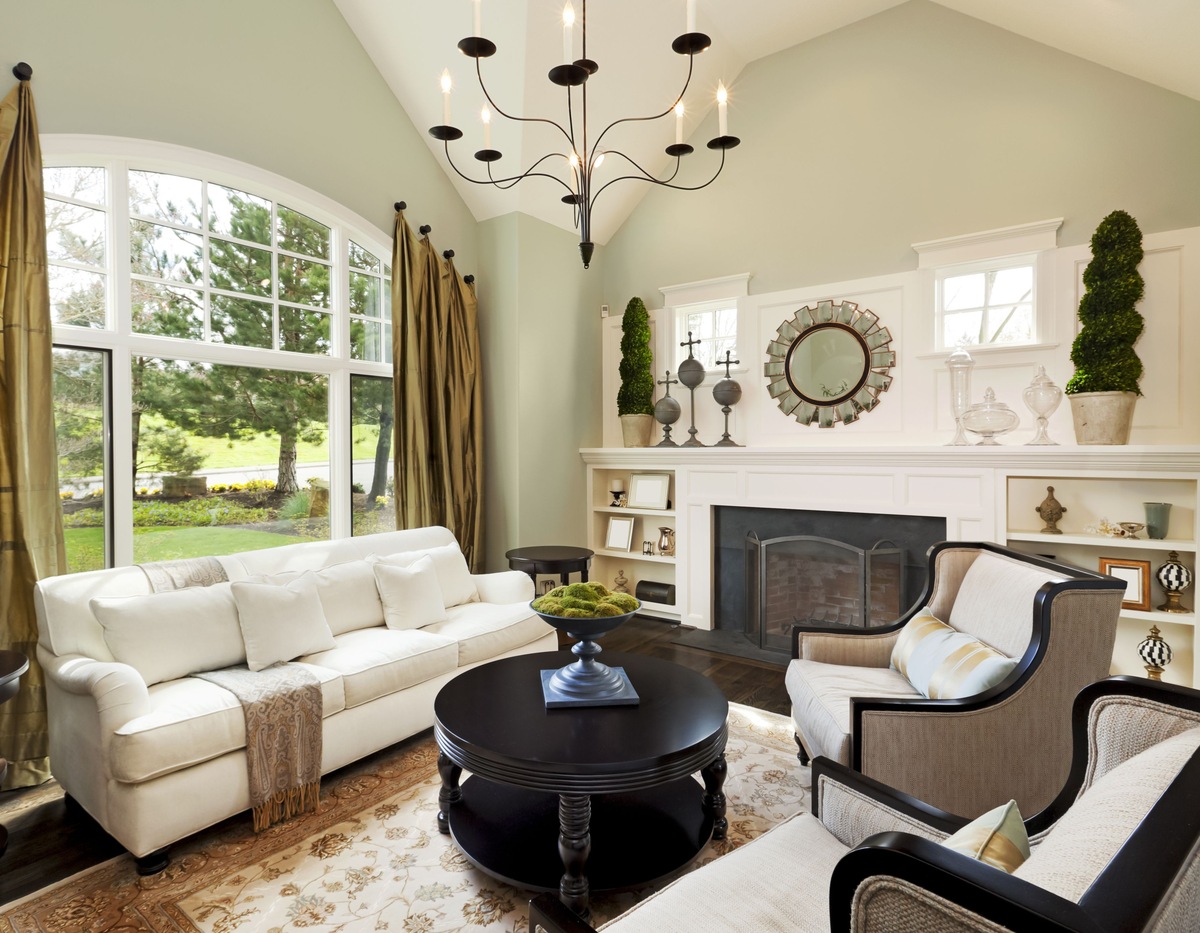
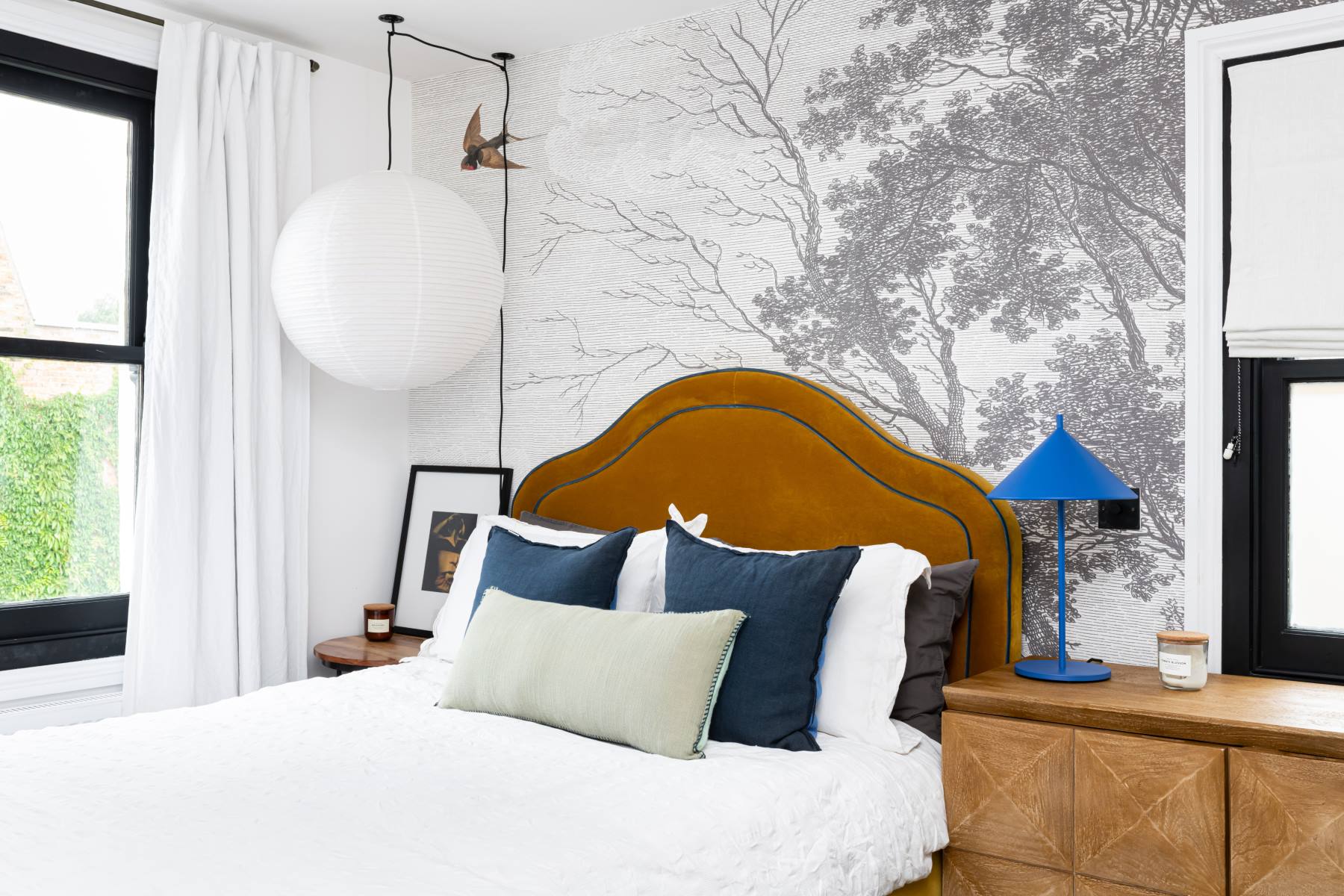

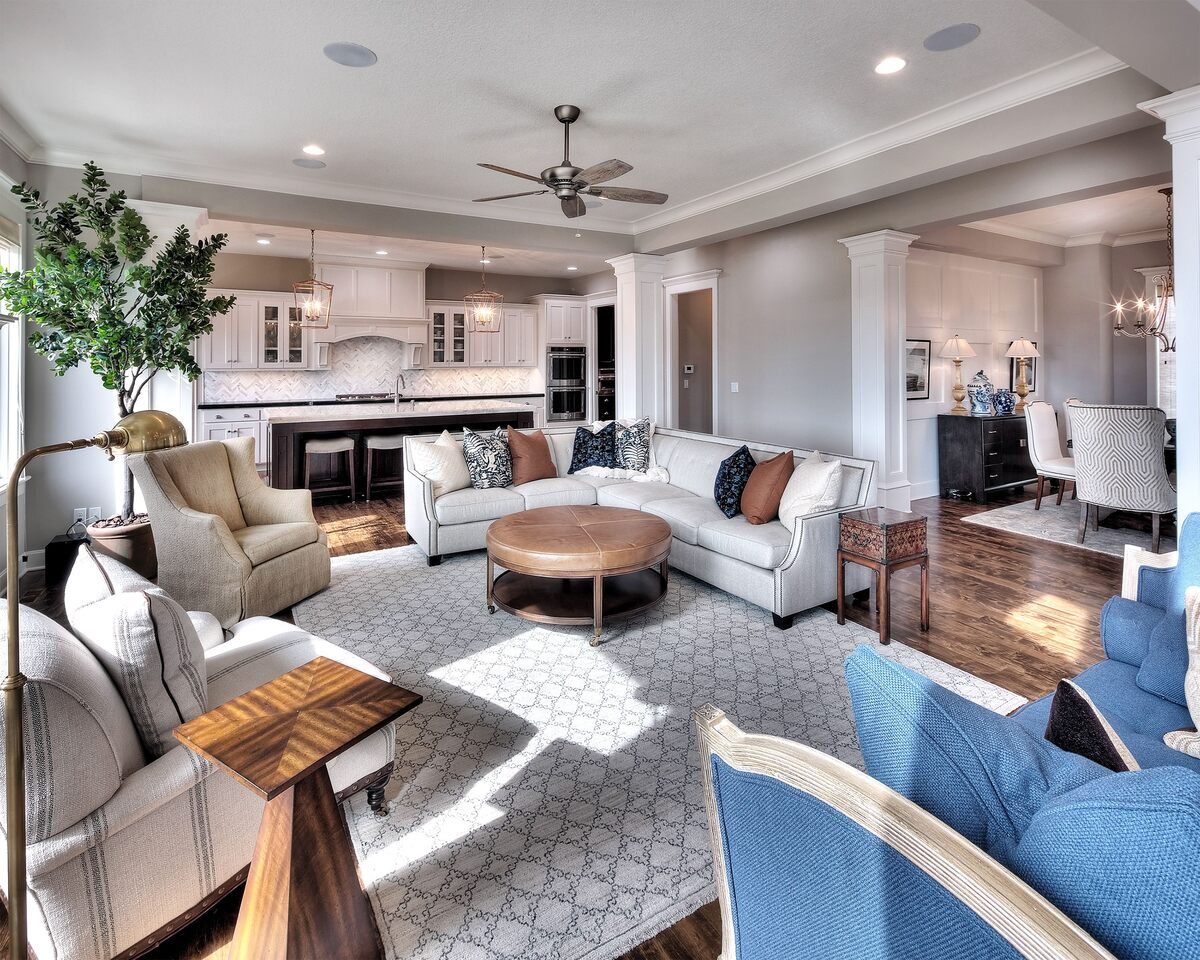
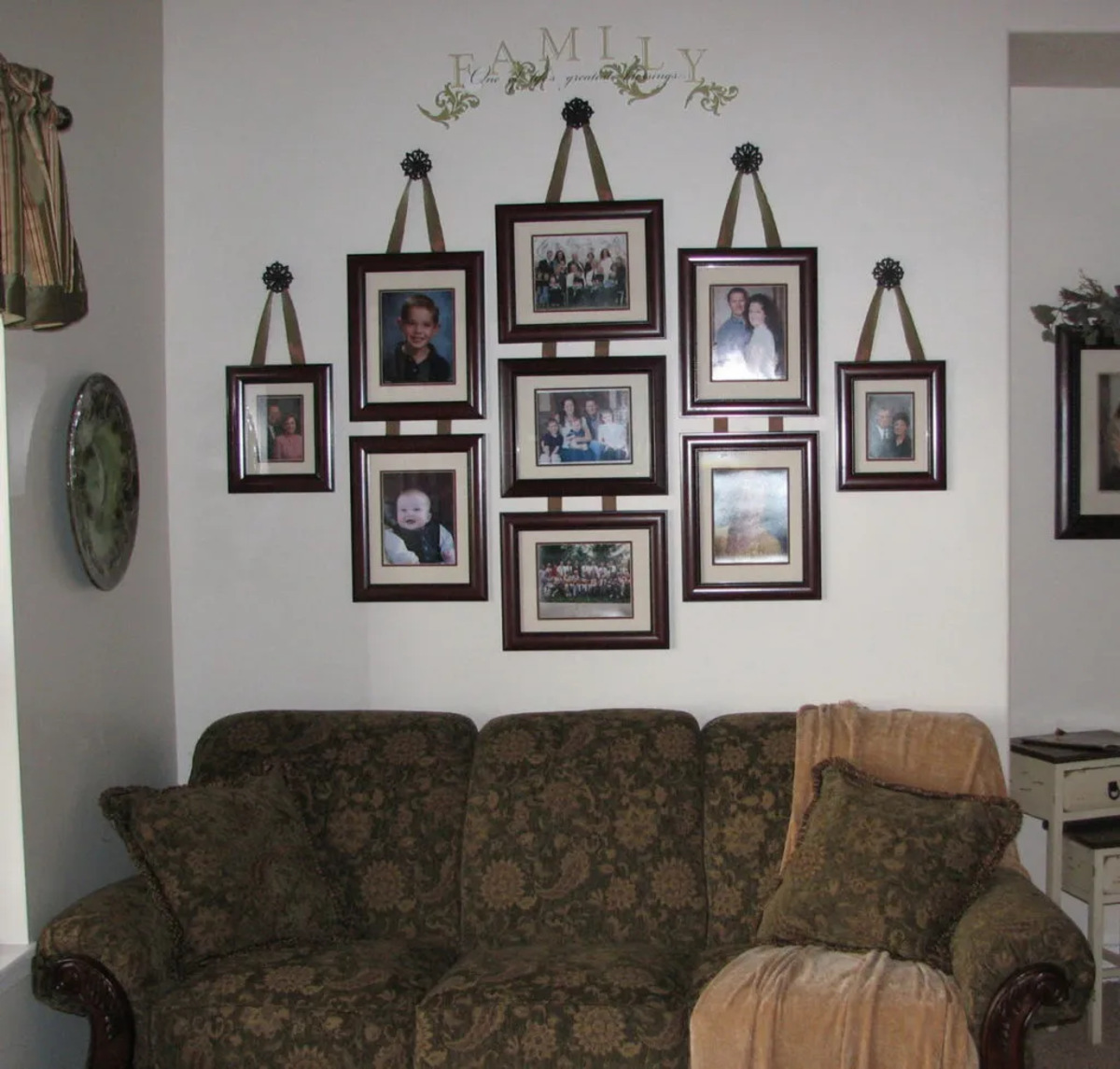



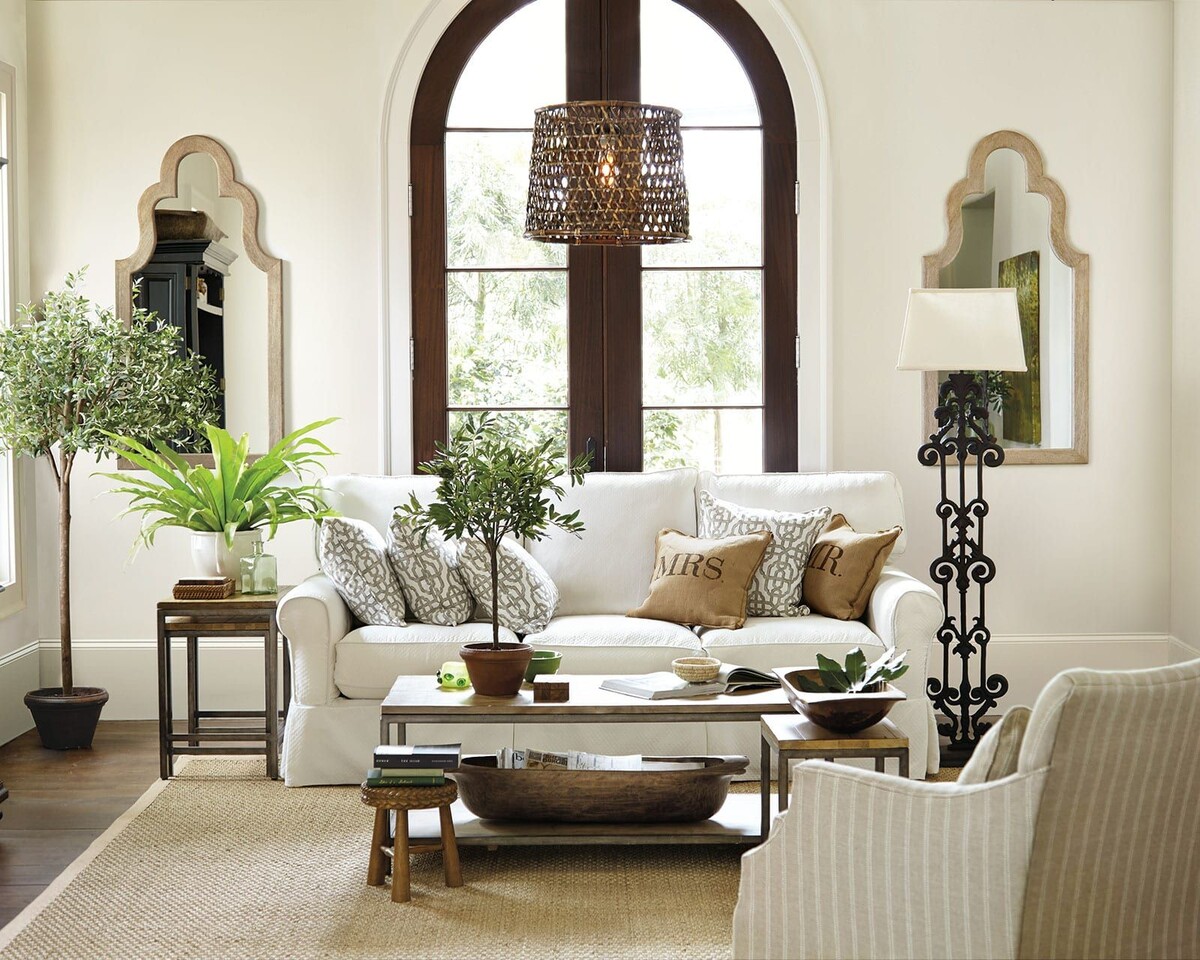

0 thoughts on “How To Commission Decorative Plasterwork”